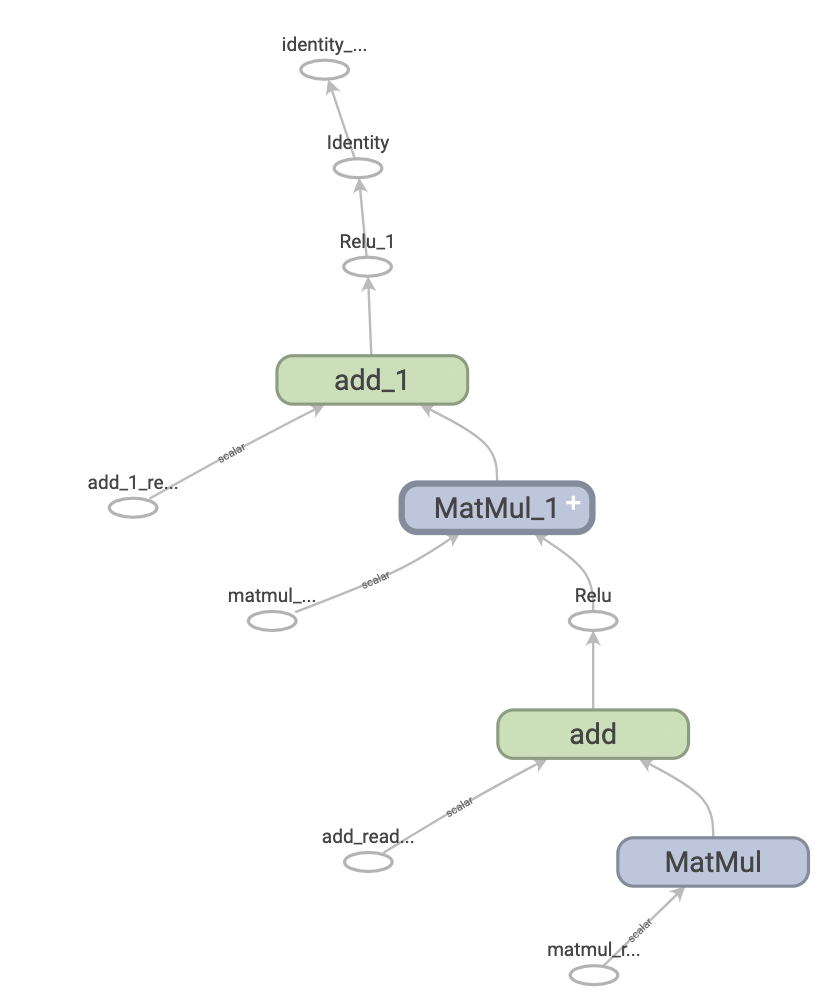//============================================================================
// Name : TensorflowTest.cpp
// Author :
// Version :
// Copyright : Your copyright notice
// Description : Hello World in C++, Ansi-style
//============================================================================
#include <iostream>
#include <tensorflow/c/c_api.h>
#include <tensorflow/c/c_test_util.h>
#include <algorithm>
#include <cstddef>
#include <iterator>
#include <memory>
#include <vector>
#include <string.h>
using namespace std;
int main() {
cout << "!!!Hello World!!!" << endl; // prints !!!Hello World!!!
cout << "Hello from TensorFlow C library version" << TF_Version() << endl;
TF_Status* s = TF_NewStatus();
TF_Graph* graph = TF_NewGraph();
// Construct the graph: A + 2 + B
TF_Operation* a = Placeholder(graph, s, "A");
cout << TF_Message(s);
TF_Operation* b = Placeholder(graph, s, "B");
cout << TF_Message(s);
TF_Operation* one = ScalarConst(1, graph, s, "kone");
cout << TF_Message(s);
TF_Operation* two = ScalarConst(2, graph, s, "ktwo");
cout << TF_Message(s);
TF_Operation* three = Add(one, two, graph, s, "kthree");
cout << TF_Message(s);
TF_Operation* plus2 = Add(a, two, graph, s, "plus2");
cout << TF_Message(s);
TF_Operation* plusB = Add(plus2, b, graph, s, "plusB");
cout << TF_Message(s);
TF_Operation* plusC = Add(plusB, three, graph, s, "plusC");
cout << TF_Message(s);
// Setup a session and a partial run handle. The partial run will allow
// computation of A + 2 + B in two phases (calls to TF_SessionPRun):
// 1. Feed A and get (A+2)
// 2. Feed B and get (A+2)+B
TF_SessionOptions* opts = TF_NewSessionOptions();
TF_Session* sess = TF_NewSession(graph, opts, s);
TF_DeleteSessionOptions(opts);
TF_Output feeds[] = { TF_Output { a, 0 }, TF_Output { b, 0 } };
TF_Output fetches[] = { TF_Output { plus2, 0 }, TF_Output { plusB, 0 }, TF_Output { plusC, 0 } };
const char* handle = nullptr;
TF_SessionPRunSetup(sess, feeds, TF_ARRAYSIZE(feeds), fetches,
TF_ARRAYSIZE(fetches), NULL, 0, &handle, s);
cout << TF_Message(s);
// Feed A and fetch A + 2.
TF_Output feeds1[] = { TF_Output { a, 0 }, TF_Output { b, 0 } };
TF_Output fetches1[] = { TF_Output { plus2, 0 }, TF_Output { plusB, 0 }, TF_Output { plusC, 0 } };
TF_Tensor* feedValues1[] = { Int32Tensor(1), Int32Tensor(3) };
TF_Tensor* fetchValues1[3];
TF_SessionPRun(sess, handle, feeds1, feedValues1, 2, fetches1, fetchValues1,
3, NULL, 0, s);
cout << TF_Message(s);
cout << *(static_cast<int*>(TF_TensorData(fetchValues1[0]))) << endl;
cout << *(static_cast<int*>(TF_TensorData(fetchValues1[1]))) << endl;
cout << *(static_cast<int*>(TF_TensorData(fetchValues1[2]))) << endl;
// Clean up.
TF_DeletePRunHandle(handle);
TF_DeleteSession(sess, s);
cout << TF_Message(s);
TF_DeleteGraph(graph);
TF_DeleteStatus(s);
return 0;
}
</vector></memory></iterator></cstddef></algorithm></iostream> |












